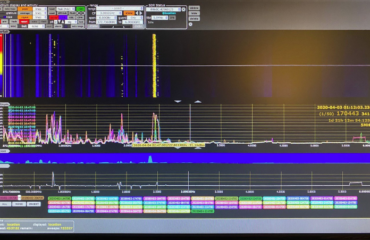
Projects to Detect Implants
🔍 How to Detect Micro Implants and Titanium Fibers in the Body: A TI Field Guide
🎯 The Mission
If you suspect you have a micro-implant or titanium fiber embedded in your jaw, throat, or elsewhere, this guide will show you exactly how to detect it — using tools you can either build yourself or buy affordably.
The goal is to find implants as small as <1 mm, using methods that:
- Penetrate tissue up to 5 cm
- Deliver ~0.1 mm resolution or better
- Are realistic for DIY or second-hand purchase
🛠️ Option 1: Build Your Own High-Frequency Ultrasound System (Best DIY Option)
✅ Why It Works
- Titanium reflects sound extremely well, creating sharp echo spikes
- 10–20 MHz ultrasound = 0.075–0.1 mm resolution
- Safe, non-invasive, and repeatable
🧰 What You Need
- Transducer: 10–20 MHz (eBay, DotMed.com, $100–$300)
- Pulser/Receiver: Open-source EchoMods (github.com/kelu124/echomods)
- Oscilloscope or ADC: Analog Discovery 2 (~$300)
- Software: Python + NumPy/Matplotlib for signal analysis
🧪 How to Build It
- Get the Transducer: Search “20 MHz ultrasound transducer” on surplus sites
- Circuitry: Use EchoMods’ schematics or build an op-amp based pulser
- Connect USB Oscilloscope to your PC
- Analyze Echoes: Use Python to detect amplitude spikes (A-mode) or plot depth (B-mode)
🚀 Boost Performance
- Upgrade to 50 MHz for 0.03 mm resolution (lower depth)
- Apply signal deconvolution for better clarity
📚 Resources
- GitHub: https://github.com/kelu124/echomods
- Community: https://openultrasound.github.io
- Tutorials: https://hackaday.com/tag/ultrasound/
⚠️ Safety
- Keep power under 100 mW/cm²
- Limit scan time to prevent heating tissue
💼 Option 2: Buy a High-Frequency Ultrasound Device (Plug-and-Play)
If you prefer not to build, these devices deliver top-tier resolution:
🔍 Recommended Devices
- Clarius L20HD (20 MHz, ~0.075 mm) – ~$5,000
- Butterfly iQ+ (10 MHz, ~0.15 mm) – ~$3,000
- Olympus Epoch 650 + 20 MHz probe – ~$5,000 (industrial-grade)
- Interson SP-L01 (7.5 MHz, ~0.2 mm) – ~$2,000 (budget pick)
🛒 Where to Buy
- eBay: Search “high frequency ultrasound”
- Dotmed.com: Medical surplus listings
- Rentals: Rentex or KWIPPED
⚡ Option 3: Photoacoustic Imaging (Advanced DIY)
🔬 Why It Works
- Laser heats titanium → it generates ultrasound
- High contrast imaging with ultra-fine resolution (10–50 µm)
🧰 What You Need
- Pulsed laser (532 nm diode or Nd:YAG): $200–$500
- Ultrasound transducer: 5–10 MHz ($100–$200)
- Oscilloscope or ADC: Same setup as ultrasound
⚙️ How to Build
- Align laser to scan tissue area
- Capture resulting sound waves with transducer
- Process signal in Python or MATLAB
🧠 Resources
- GitHub: https://github.com/openpap/openpap
- Read: Optics Express journal
⚠️ Watch Out
- Eye safety is critical – wear protective goggles
- Setup requires precision
- Total cost: $500–$1,000
🧲 Option 4: Eddy Current Detection (Shallow Implants)
Easiest to build, but limited resolution.
🔧 DIY Version
- Coil + oscillator circuit + frequency counter
- Detects metal-induced frequency shift near skin
🧰 Kit or Build Materials
- Oscillator (100 kHz+)
- Arduino or frequency counter
- Wound detection coil
💵 Buy Option
- Garrett Pro-Pointer handheld metal detector (~$100)
🔻 Limitations
- Penetration: 1–2 cm max
- No imaging, only detection
🧠 Recommended Path for TIs
🔬 Best DIY: High-Frequency Ultrasound
- 10–20 MHz transducer + EchoMods = custom scanner
- Cost-effective, proven tech, very sensitive
💼 Best Commercial: Clarius L20HD
- Portable, app-controlled, dermatology-level detail
👨🔬 Most Advanced: Photoacoustics
- Extreme detail for shallow implants
- Steep learning curve
✋ Final Tips for TIs
- Focus on jawline, throat, ear, and temporal regions
- Look for sharp echo spikes or consistent metal signals
- Validate findings with different angles or motion scanning
📣 Let your findings be documented. If you find something, record the raw data, capture screenshots, and reach out to medical or TI support networks with your evidence.
🧠 Your mind and body are sacred. You have the right to scan, detect, and protect.

